#Masolino
Photo
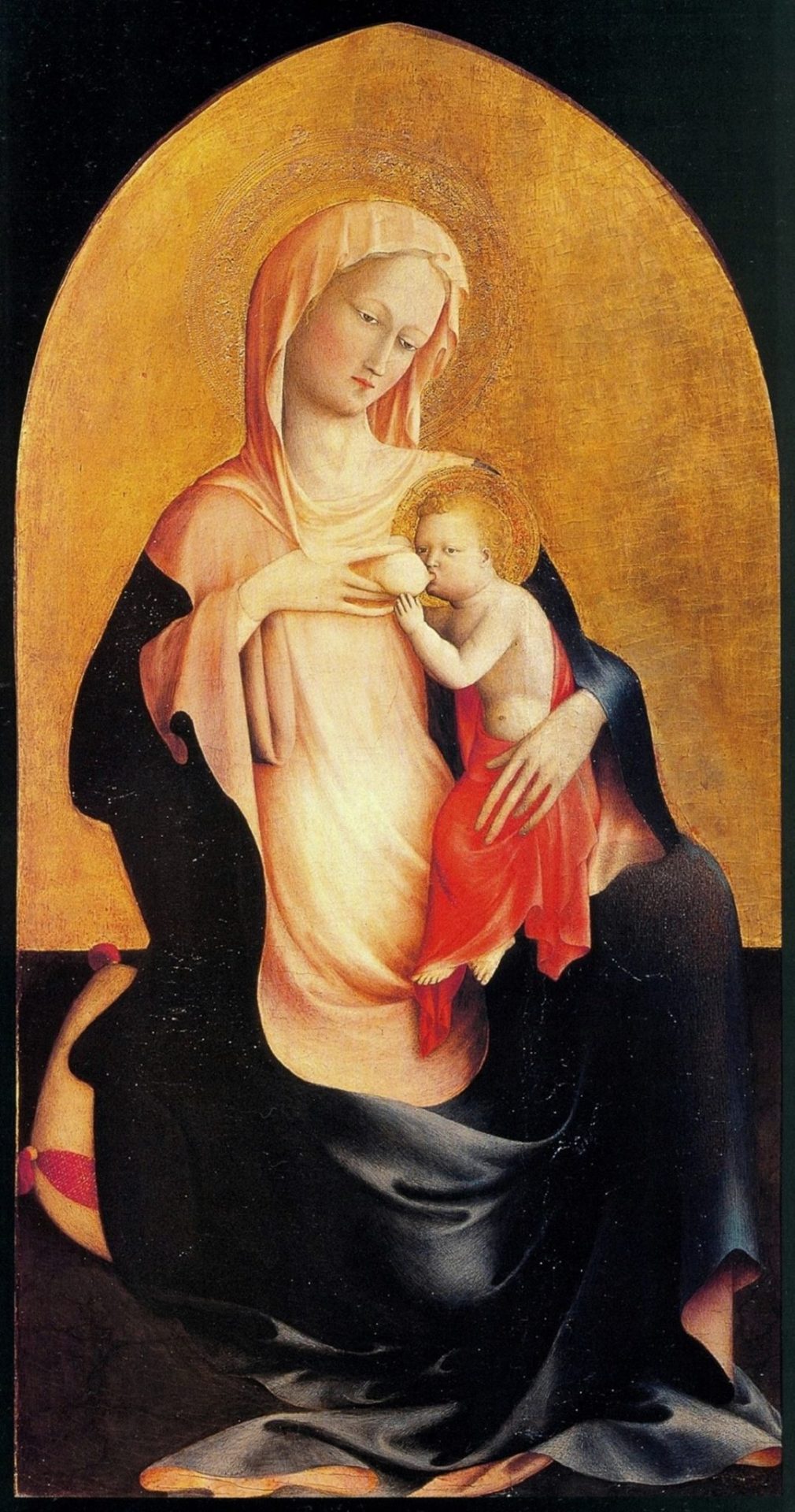



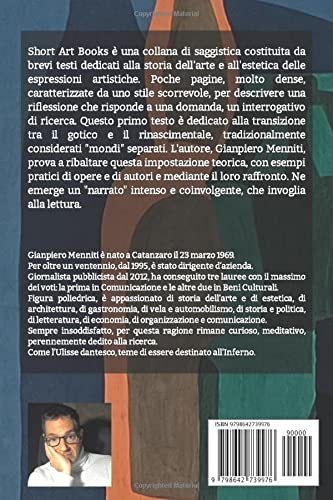
Da: IL GOTICO CHE NON TI ASPETTI - di Gianpiero Menniti
L'INFINITA TRADIZIONE
In arte, la tensione verso la vita è sempre un richiamo alla fragilità dell’esistenza. La stessa rappresentazione è tentativo effimero di superamento dell’ineluttabile, anche quando la figurazione pittorica o plastica sembri voler cogliere accenti di illusoria fede metafisica, di grandezza e di fasto tendenti all’espressione eterna: è esigenza antropologica di finalismo.
Vita e morte convivono nella sensibilità dell’artista.
Anche il richiamo più potentemente prosaico al reale materico, risulta essere rappresentazione del limite invalicabile, di un buio lasciato ai margini.
Ogni rappresentazione, sia che abbia carattere sacrale che mondano o profano, lascia sullo sfondo del suo divenire visione ipostatizzata l’incertezza dell’astratto come di una domanda mai soddisfatta e sempre incombente sul significato dell’esistenza.
È per questa ragione profonda che un’opera pittorica o plastica suscita passioni inesplicabili: rappresenta il riverbero di una lacerante incertezza colta nel suo presentarsi al cospetto delle coscienze.
Alla luce di queste considerazioni, porre la comparazione tra due stili d’arte non consiste solo nel rilevarne i valori iconografici, iconologici e formali emergenti: il tema si sposta più in profondità, laddove per ogni stile esiste un comune sedimento nel quale alberga la sensibilità verso quel limite oscuro.
Poi, il tempo in quanto fenomeno culturale, incide sulla figurazione (bi e tri-dimensionale) e concorre a delineare l’interpretazione delle suggestioni creative e l’uso degli strumenti di rappresentazione.
Di qui nasce lo stile che diviene tradizione quando riceve un riconoscimento di diffuso apprezzamento collettivo.
E dalla tradizione (nel suo significato etimologico di “trasmettere oltre” ) nasce la necessità di un’artificiosa classificazione nella quale “l’infinito trasmettere” si perde in improbabili cesure.
Il gotico internazionale, in origine “gotico cortese” (dal magistero di Simone Martini) e poi tardo gotico, non può essere derubricato a vaga espressione che il Rinascimento (altra visione schematica) supera confinandola nei recessi “dell’età di mezzo”: lo stile gotico è, nel suo lungo processo di maturazione intertestuale, anticipatore del Rinascimento stesso, sia nella versione italiana che in quella accostata del mondo fiammingo: nella ricerca di simmetria compositiva; nella visione della profondità come richiamo narrativo; nella tensione verso una caratterizzazione psichica nell’espressività dei gesti e dei volti; nell’accuratezza realistica dei particolari; nella varietà coloristica e nella ricercatezza luministica.
- Masolino da Panicale (1383 - 1447): "Madonna col Bambino", 1423, Galleria degli Uffizi, Firenze
- Gentile da Fabriano (1370 - 1427): "Madonna con il Bambino e angeli", tratta dal "Polittico Quaratesi", 1425, National Gallery, Londra
- Masaccio (1401 - 1428): "Madonna in trono col Bambino e quattro angeli", tratta dal "Polittico di Pisa"1426, National Gallery, Londra
- In copertina: Maria Casalanguida, "Bottiglie e cubetto", 1975, collezione privata
#thegianpieromennitipolis#Masolino#Masaccio#gentile da fabriano#arte#arte medievale#arte gotica#maria casalanguida
33 notes
·
View notes
Photo
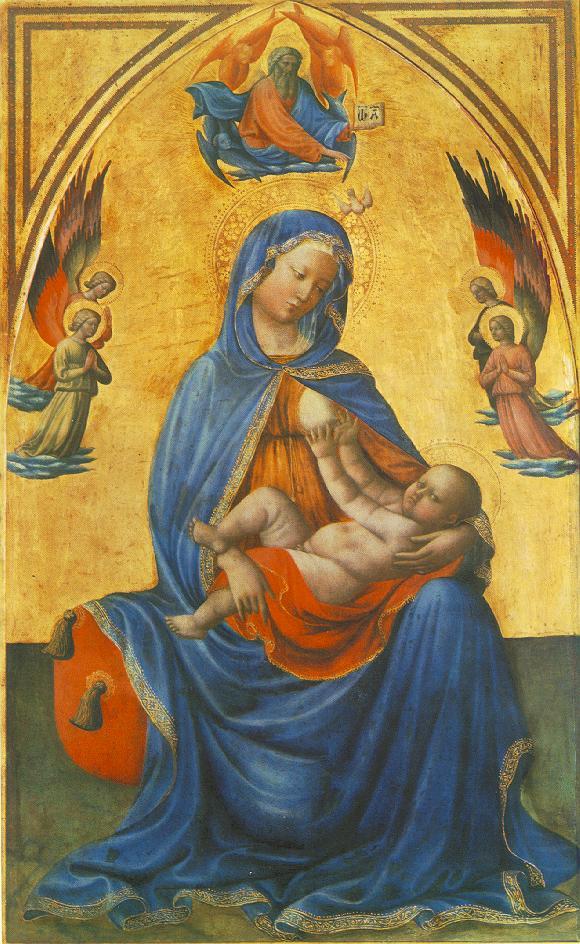
Madonna with the Child. Masolino da Panicale (1383-1440)
20 notes
·
View notes
Photo
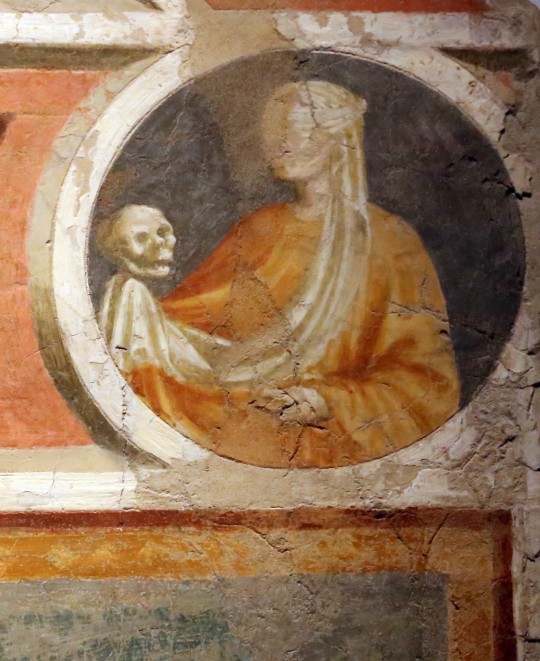
Masolino da Panicale - Pieta. Detail. 1424
37 notes
·
View notes
Photo

Once in a lifetime! Up on the scaffolding at the Cappella Brancacci to see Masaccio’s masterpiece up close for the first time... Here Masaccio’s • Baptism of the Neophytes • from 1425-27. What an incredible treat to be face to face with these unbelievable masterpieces of renaissance art! These frescoes inspired so many artists throughout history. One of them was the young Michelangelo, who made a beautiful study of the iconic shivering man (standing on the right in this scene) around 1494-96, when he was 19-21. See image 10. Some background. The Cappella Brancacci is a small chapel within the otherwise pretty plain Santa Maria del Carmine Church. In 1424 Felice Brancacci, a wealthy Florentine merchant and statesman, commissioned Masolino to paint his chapel with a cycle of frescoes illustrating the life of St. Peter (who can be identified by his orange gown). Masolino's associate, the talented 21-year-old Masaccio, 18 years younger than Masolino, assisted, but during painting Masolino abandoned the work and left to Hungary. The commission was given to Masaccio, he took over. However, still working in the chapel, Masaccio was called later that year to Rome, probably to discuss a new commission. Here in Rome, he died mysteriously, aged only 27! The remaining parts of the fresco cycle were completed by Filippino Lippi only much later in the 1480’s. #masaccio #masolino #filippinolippi #michelangelo #art #artist #painter #painting #fresco #fashion #muse #allegory #storytelling #mythological #religious #religiousart #renaissance #renaissanceart #arthistory #portrait #portraiture #figurative #figuration #figurativeart #theamazingpoppingeyes #cappellabrancacci #brancaccichapel #florence https://www.instagram.com/p/CmpS-zaL2OI/?igshid=NGJjMDIxMWI=
#masaccio#masolino#filippinolippi#michelangelo#art#artist#painter#painting#fresco#fashion#muse#allegory#storytelling#mythological#religious#religiousart#renaissance#renaissanceart#arthistory#portrait#portraiture#figurative#figuration#figurativeart#theamazingpoppingeyes#cappellabrancacci#brancaccichapel#florence
2 notes
·
View notes
Text
Cappella Brancacci: il punto della situazione sul restauro
Inizia nella Cappella Brancacci la seconda fase del restauro.
Proseguono le operazioni di monitoraggio, studio e restauro conservativo nella preziosa cappella affrescata da Masolino, Masaccio e Lippi della chiesa del Carmine, facente parte dei Musei Civici fiorentini e di proprietà del Fondo Edifici di Culto del Ministero dell’Interno.
Nel cantiere aperto al pubblico quattro giorni a settimana,…

View On WordPress
#artblogger#arte#bellezza#english#Lippi#madeinitaly#masaccio#masolino#Michelangelo Buonarroti#restauro#restoration#rinascimento#scultura
0 notes
Text
Hidden by Masolino
School photos, those wide-angle records of all the staff and pupils in a year, sometimes include a child who is partly concealed by another and consequently harder to identify. Similarly, in the long conspectus of artists at a given time, there are places where one partly conceals another. The collegiate church at Castiglione d’Olona, to the north-west of Milan, is such a place. To Renaissance specialists it is well known for having been frescoed in the 1430s by Masolino, the painter who had earlier worked alongside Masaccio in the Brancacci Chapel of the Carmine church at Florence. However, there was another artist decorating the walls at Castiglione d’Olona. I doubt that anyone knows his name, but I will devote this Shorter Notice to bringing him out from behind Masolino because I think he was the better artist and certainly the more modern in the context of his time.

Collegiate Church at Castiglione Olona, Lombardy, Italy
As I have said in my Studies on Masaccio, Masolino was in many ways a late Medieval artist trying to adapt to the new art that was sweeping through Florence in the latter part of his career. This other artist is no Masaccio, but he seems much more confident of his powers within that developing trend. He was also the creator of a rather memorable cast of characters rendered on stage in painted scenes and studied close-up in beautiful line drawings. I regret that I do not possess enough images to adequately represent his work at Castiglione d’Olona – a consequence of Masolino hogging the attention of scholars and therefore publishers and photographers – but there are enough to at least make clear that the artist he eclipses is worth looking at.

Frescoes on the ceiling at Castiglione d’Olona, Above: the more colourful of which are by Masolino and, Below: Monochrome images of the lower frescoes, which were painted by this other artist

The principal scenes are from the life of two early Christian martyrs, Saint Stephen who died in the First Century, and Saint Lawrence, martyred at Rome in 258. We can begin with the Trial (disputa) of Saint Stephen, a scene in which the Saint, looking to our right, stands like a preacher in a pulpit, but a pulpit that, as he was denounced by Jews as a blasphemer and had to defend himself, is also a dock. To left and right of him are his denouncers. Behind him we see an arcaded church interior, the columns given leafy capitals.
The scene is poorly preserved, but one feature of it is still clear, and that is the artist’s draughtsmanship, his drawing with a brush. This sets him apart from Masolino: drapery folds in Masolino are not represented as lines, but they very clearly are in this and all the other scenes depicted by the artist we are considering.

Left to Right: Tuscan Man, Albertina Museum, Vienna ; Head of a Man (attrib Uccello), Ashmolean Musuem, Oxford ; Man in Profile (attrib Uccello) Louvre, Paris
Fortunately there are drawings plausibly by him which attest to his skill as a draughtsman. Four are at the Albertina in Vienna, one is at the Ashmolean Museum in Oxford, another in the Louvre. One of the four at Vienna is a portrait of the Prior of a Florentine church, SS Michele e Gaetano. Interestingly, the head, drawn in pen and ink, has a brownish wash and is set against a backdrop described as ‘shaded with red chalk’. All have remained assignable only to the ‘Tuscan School. first half of the fifteenth century’, but I want to assign them to this artist. With a delicate but assured hand he draws the profiles of men with aquiline noses, ‘crows’foot’ creases about the eye, incisive lips and jutting chins The Oxford one is partly colour-washed, but not in a way that detracts from the linear elegance and purity of the image.It should be compared with the profile of the Emperor Decius pointing his accusing finger at Saint Lawrence.
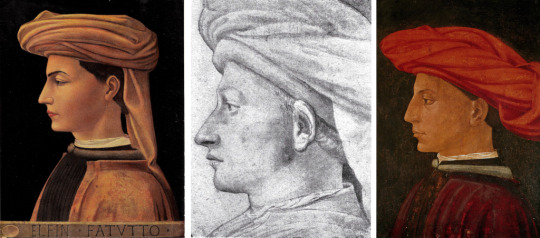
Left to Right: Portrait of a Young Man (attrib Uccello) Musée des Beaux-Arts, Chambéry ; Head of a Man, Albertina, Vienna ; Young Man in a Scarlet Turban (attrib Masaccio), Isabella Gardner Museum, Boston
At the Musée des Beaux-Arts de Chambéry in France is a profile portrait of a Young Man, attributed by some to Uccello, by others to Masaccio. This also I want to claim for our artist. It has his linear clarity all over it ( perhaps a little too markedly in the eyebrows), and that purity of line is manifest in a drawing in the Albertina at Vienna which may not be a study for the Chambéry painting, or even be of the same young man, but definitely exhibits the style and demonstrates, I suggest, a refinement of sensibility the more evident when the painting is juxtaposed with a similar painted portrait from the Isabella Gardner Museum in Boston, quite likely Masolino’s work but in any case careless and clumsy by comparison.
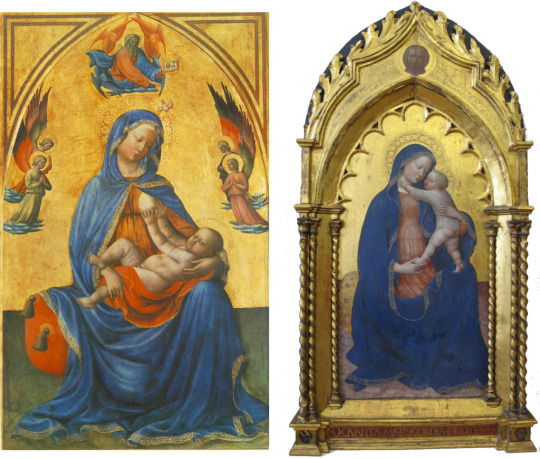
Left: Madonna of Humility, Alte Pinakothek, Munich and Right: Madonna and Child, Kunsthalle, Bremen (both attrib Masolino)
A second characteristic of the Chambéry picture is its palette. This has a nut-brown, autumnal warmth to it which we can pick up on elsewhere, for instance in the Madonna and Child at the Alte Pinakothek at Munich where a similar tawny gold appears in the dress of the Virgin under her blue robe. This very attractive painting has often been assigned to Masolino, but juxtapose it with Masolino’s Bremen Madonna (at the Kunsthalle in Bremen) and it is clear that a quite different hand is at work – the hand, I am sure, that is responsible for the Chambéry and other pictures we are considering.The lack of colour reproductions of our artist’s work at Castiglione d’Olona is regrettable, but beneath one that shows Masolino’s Nativity we catch the top of the Saint Lawrence before the Emperor Decius and can see at once how much deeper and browner the palette is, when compared with Masolino’s pastel one of pale yellows and pinks.

In this image from Castiglione d’Olona we can see a change in colour palette between the upper frescoes and those below
On the subject of the brown palette, there is a fresco in Santa Maria Maggiore in Florence of Christ alone on the Cross; here the figure of Christ is modelled in pale brown, the Cross is brown (with a darker brown grain), the plain background is dark blue over brown, and the decorative border, arched at the top, is white over brown. A fine drawing for a crucified Christ (ex Coll. N. Colville, whereabouts unknown) appears to be a study for something similar.
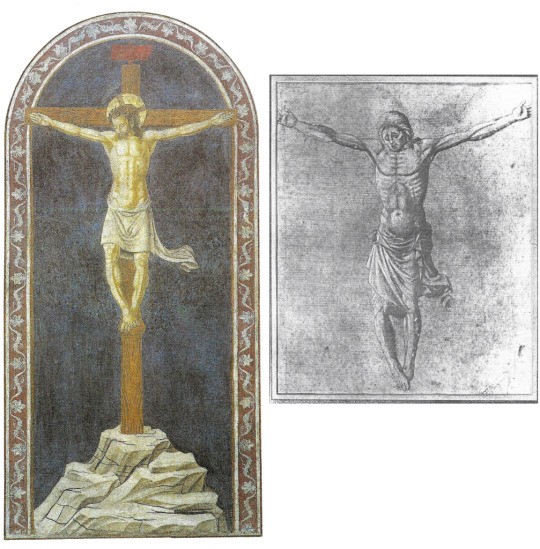
Left: Fresco at Santa Maggiore, Florence and Right: drawing, possibly a study for a similar fresco, whereabouts unknown
That same nut-brown colour of the Chambéry picture recurs in the background of a Madonna and Child flanked by two Angels in the Augustinian church of Santo Stefano at Empoli. The angels with their multicoloured wings are sisters, as it were, to those of the Madonna at Munich. The blue robe of the Madonna in the latter work falls like a cascade of water from the hood round Her face down into more and more complicated folds that are lovely to look at but leave one wondering where Her right knee and leg actually are.The rhythms here are essentially Gothic, as in , say, Gentile da Fabriano.At Empoli the artist has moved forward from such Gothic indulgence and the forms are more solid and suggestive of a later date.

Madonna and Child with two Angels, Augustinian church of Santo Stefano, Empoli
Three works that perhaps antedate the Munich picture are a damaged, much-weathered tabernacle in Piazza Santa Maria Novella in Florence – another Mother and Child, with four Saints – a fresco fragment of an Apostle from Santa Maria del Carmine in Morrocco, Italy, and the delightful picture in the London National Gallery of Saint Dorothy holding the hand of a boy Christ. The complication in the drapery of Dorothy’s outer robe is reminiscent of what we find in the Munich Madonna. Close in style is a panel of unknown whereabouts showing Mary enthroned with the Child holding a scroll, the two of them flanked by John the Baptist and another Saint, with a vase of flowers between them By contrast all is more straightforward and more solid in yet another Madonna and Child that was sold by Drouot in Paris in 1927.
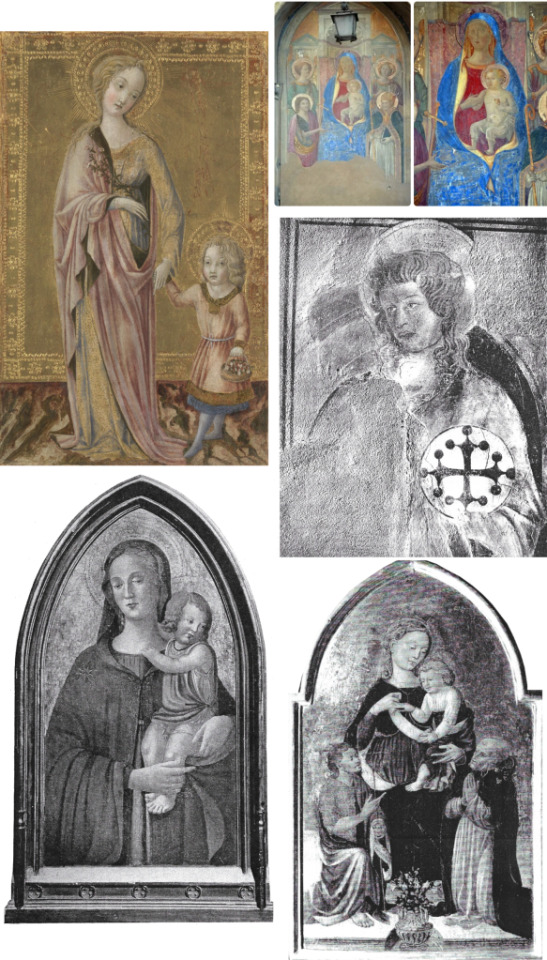
Clockwise from Top Left: St Dorothy, National Gallery, London ; Tabernacle in Piazza Santa Maria Novella, Florence ; Frescoe fragment, Santa Maria del Carmine, Florence ; Two panels of unknown origin depicting the Madonna
One more Mother and Child picture, a Madonna of Humility at the Fitzwilliam Museum in Cambridge, belongs somewhere in the series, but it is, apparently, both unfinished and much altered.The artist’s linear delicacy, in treatment of hair and drapery folds, is eloquent in spite of the condition and strange colouring.

Madonna of Humility, Fitzwilliam Museum, Cambridge
All the above items – illustrations 15 to 21- can be taken to represent, in respect of Castiglione d’Olona, an earlier, Florentine phase of the artist’s career. We can begin to move it on by considering first a Figure of Christ with hands crossed over His breast, now at Minneapolis. This has much in common with the Munich Madonna but the modelling of Christ’s face links it also to an unusual panel in the Uffizi that memorialises three painters of the Gaddi family, Taddeo, Zenobi and Angelo.The profiled head of Angelo, on our right, is a strong reminder of the Chambery Portrait of a Young Man, the associated Albertina drawing, and some of the young male heads in the fresco scenes at Castiglione d’Olona. One begins to recognise the type: clear eyebrows, a sharpish nose, tightly closed lips, and a definite chin. This is what we find also in the Ashmolean and Vienna drawings mentioned earlier.
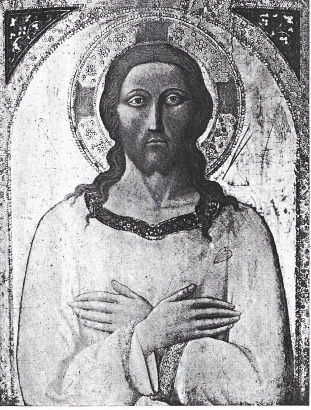
Facial features in a portrait of Christ, above, are reminiscent of those found in a protrait of the Gaddi family at the Uffizi Gallery, Florece, below
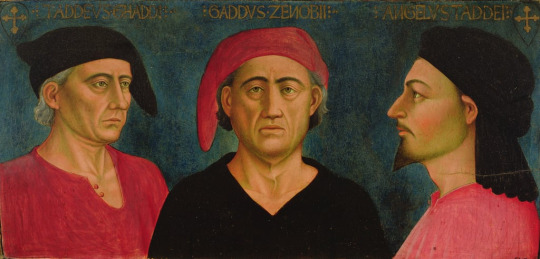
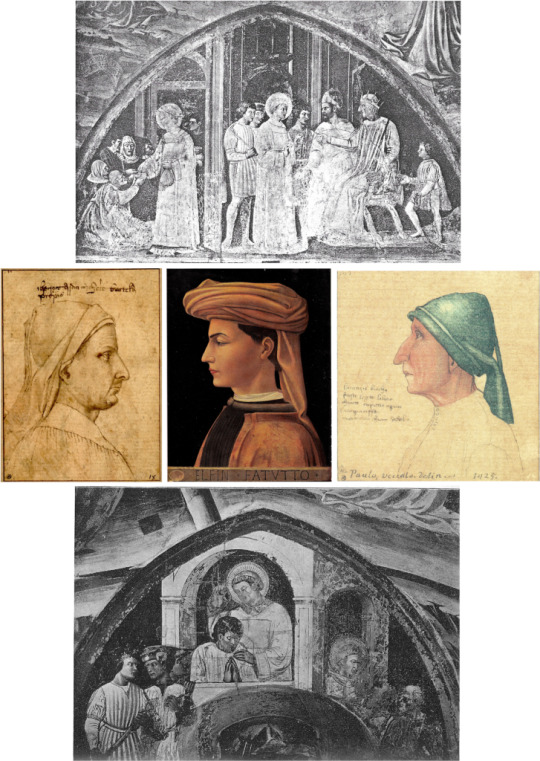
Top and Bottom: Frescoes from Castiglione d’Olona ; Centre from Left: Tuscan Man, Portrait of a Young Man, Head of a Man, as before
To summarise: this artist, like Masolino, begins in the late Gothic style but appears throughout to be the better draughtsman, as evinced by the pure-line drawings and by the drawn nature of his work as both painter of panels and decorator in fresco. This superior competence allows him to delineate heads (often in profile) and whole figures with a sensitive precision and a sharper suggestion of character. Once seen, the Ashmolean Man with Aquiline Nose is not easily forgotten. I make no claims for the artist being any kind of undiscovered genius, but I find it pleasing if connoisseurship can bring out of the shadows someone whose work is worth reassembling in so far as that is possible, given the lottery of survival and the conflicted world of attribution. It remains to hope that some photographer will soon supply a better record, in colour, of the frescoes this nameless artist contributed to the decoration of the church at Castiglione d’Olona, and thereby give more prominence to one of the more interesting contemporaries of Masaccio in that early fifteenth century period of revolutionary change.
1 note
·
View note
Text

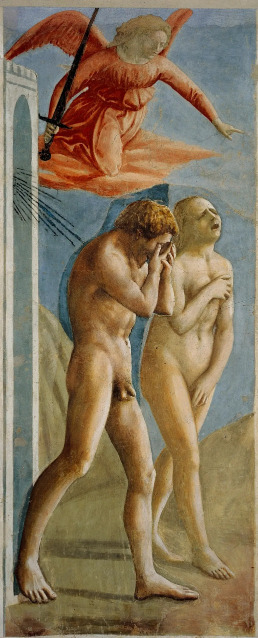
Details of Adam and Eve in the Brancacci's Chapel, Masolino da Panicale (left) and Masaccio (right), 1424-25
#cappella brancacci#santa maria del carmine#15th century#adam#eve#adam and eve#bible#masolino da panicale#masaccio#art history#art#italian art#aesthethic#frescoes#rinascimento#florence#good omes#angel#snake
17 notes
·
View notes
Photo
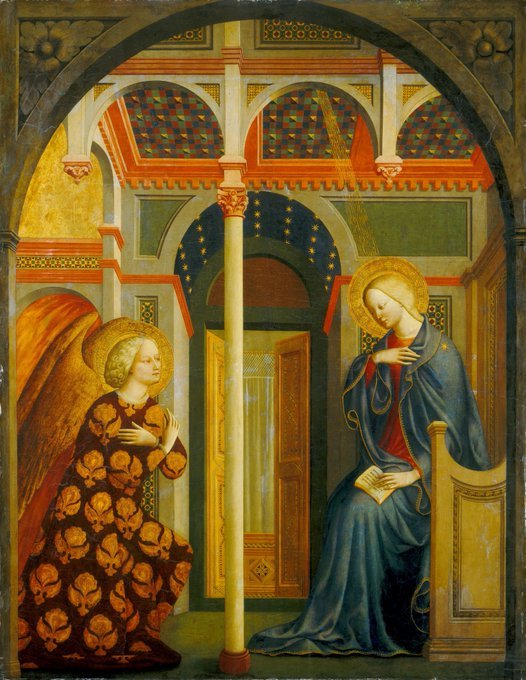
Masolino da Panicale: A Anunciación (1423-24)
7 notes
·
View notes
Photo

The Temptation of Adam and Eve at the Brancacci Chapel
#masolino da panicale#adam and eve#art#art history#renaissance#early renaissance#renaissance art#Brancacci Chapel#michelangelo#da vinci#fresco
18 notes
·
View notes
Text
oggi, 14 marzo, a roma tre: "giorgio manganelli, cento libri", un pomeriggio di studi e di testimonianze
cliccare per ingrandire
.

View On WordPress
#Andrea Cortellessa#Arturo Mazzarella#convegno#Dora Faraci#Federico Francucci#Florian Mussgnug#Francesca Corrao#Giovanni Sampaolo#Lietta Manganelli#Masolino d&039;Amico#Roberto Morozzo della Rocca#RomaTre#studi#testimonianze#Università RomaTre#Viola Papetti
0 notes
Photo
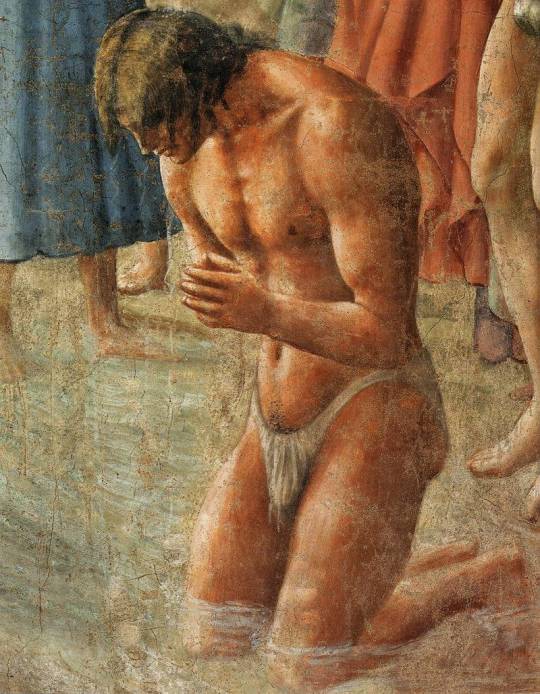





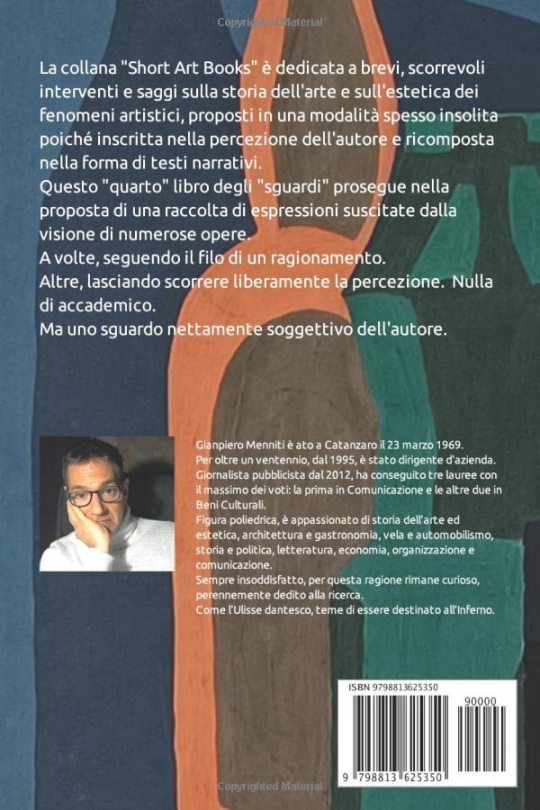
Da: SGUARDI SULL’ARTE LIBRO QUARTO - di Gianpiero Menniti
LA MANCANZA CHE FA ARTE
A Firenze, nella celebre “Cappella Brancacci” della chiesa di Santa Maria del Carmine, sono custoditi gli affreschi di Masolino, Masaccio e Filippino Lippi.
Come per molte espressioni d’arte, l’emozione della visione dal vivo è impossibile da colmare: l’aura dell’opera esiste.
Ed è costituita non dalle figure e dai colori, ma dall’atto narrativo che vibra di un’inspiegabile vividezza.
Come uno spasmo improvviso, desta l’osservatore: attonito, sente l’inopia dello sguardo posato sulle immagini, incapace di raccogliere la potenza dell’immediatezza.
Allora, in chi è attento, la presenza muta in sentimento di vaga nostalgia per una mancanza: i suoni, i profumi, le sensazioni, le pulsioni che animano la consistenza materiale della vita.
La forma pittorica può solo suscitarla.
L’arte si lascia riconoscere in quell’assenza.
Che rimarrà anelito memorabile.
Come "Amore", non possiede nessun luogo oltre il desiderio.
- Masaccio (1401 - 1428): “Il battesimo dei neofiti”, “San Pietro che risana con l’ombra” e “La cacciata”, 1425 -1427
- Masolino (1383 - 1447): “La predica di San Pietro”, 1425 - 1427
- Filippino Lippi (1457 - 1504): “San Pietro liberato dal carcere”, 1481 -1482
- In copertina: Maria Casalanguida, "Bottiglie e cubetto", 1975, collezione privata
#thegianpieromennitipolis#Masaccio#Masolino#filippino lippi#arte#arte medievale#arte italiana#firenze#cappella brancacci#santa maria del carmine
25 notes
·
View notes
Photo

Medallion. Masolino da Panicale (1383-1440)
13 notes
·
View notes
Photo

Masolino da Panicale - Pieta. 1424
52 notes
·
View notes
Photo
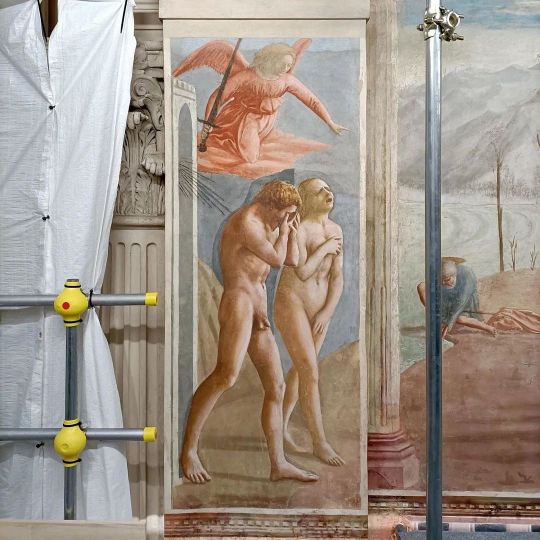
Once in a lifetime! Up on the scaffolding at the Cappella Brancacci to see Masaccio’s masterpiece up close for the first time... Here Masaccio’s • The Expulsion from the Garden of Eden • from 1425-27. What an incredible treat to be face to face with these unbelievable masterpieces of renaissance art! These frescoes inspired so many artists throughout history. One of them was the young Michelangelo, who made a beautiful study of this scene around 1492-93, when he was just 17 or 18. See image 10. Some background. The Cappella Brancacci is a small chapel within the otherwise pretty plain Santa Maria del Carmine Church. In 1424 Felice Brancacci, a wealthy Florentine merchant and statesman, commissioned Masolino to paint his chapel with a cycle of frescoes illustrating the life of St. Peter (who can be identified by his orange gown). Masolino's associate, the talented 21-year-old Masaccio, 18 years younger than Masolino, assisted, but during painting Masolino abandoned the work and left to Hungary. The commission was given to Masaccio, he took over. However, still working in the chapel, Masaccio was called later that year to Rome, probably to discuss a new commission. Here in Rome, he died mysteriously, aged only 27! The remaining parts of the fresco cycle were completed by Filippino Lippi only much later in the 1480’s. #masaccio #masolino #filippinolippi #michelangelo #art #artist #painter #painting #fresco #fashion #muse #allegory #storytelling #mythological #religious #religiousart #renaissance #renaissanceart #arthistory #portrait #portraiture #figurative #figuration #figurativeart #theamazingpoppingeyes #cappellabrancacci #brancaccichapel #florence https://www.instagram.com/p/CmFPty-rQSO/?igshid=NGJjMDIxMWI=
#masaccio#masolino#filippinolippi#michelangelo#art#artist#painter#painting#fresco#fashion#muse#allegory#storytelling#mythological#religious#religiousart#renaissance#renaissanceart#arthistory#portrait#portraiture#figurative#figuration#figurativeart#theamazingpoppingeyes#cappellabrancacci#brancaccichapel#florence
2 notes
·
View notes
Link
Domenica 4 dicembre nel centro storico di Castiglione Olona appuntamento con la tradizionale Fiera del Cardinale, mercatino dell’antiquariato e dell’artigianato. #presepiodimasolino #castiglioneolona #FabrizioSbardella #fieradelcardinale #mercatinidinatale #museodellacollegiata #palazzobrandacastiglioni
#presepio di masolino#castiglione olona#fabrizio Sbardella#fiera del cardinale#mercatini di natale#museo della collegiata#palazzo branda castiglioni
0 notes
Text
Epistolario altrui | Masolino D'Amico
Epistolario altrui | Masolino D’Amico
Di solito l’autore di una lettera non si maschera, si rivolge a un solo interlocutore e non all’umanità in generale. Quindi è, in certo modo, “sincero”. È, o cerca di essere, chiaro, e interessante; spesso vuole intrattenere il corrispondente. Per essere ascoltati bisogna essere piacevoli. E poi, quando parla di sé, l’epistolografo lo fa liberamente, non per nulla scrive a qualcuno che conosce e…

View On WordPress
0 notes